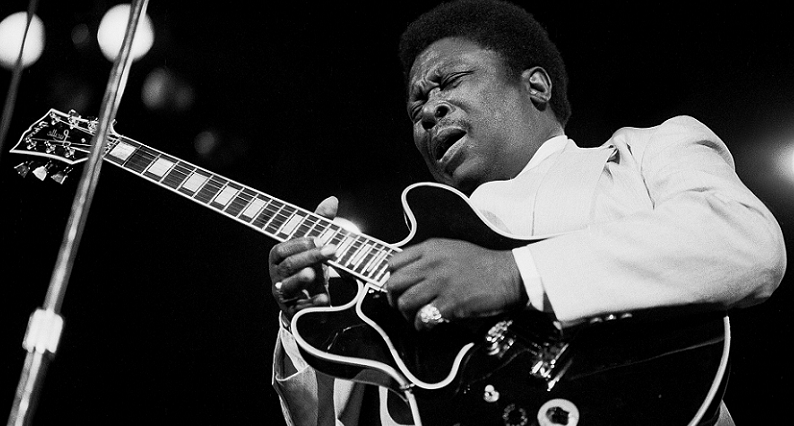
Music, often described as the universal language, transcends boundaries and connects people across different cultures. In our globalized world, music has become a vibrant tapestry woven with threads from every corner of the globe. Here we explore this fascinating interplay of cultures in the realm of music. Through this exploration we come to understand not just the music itself, but its profound impact on society. Music breaks stereotypes, fosters understanding, and can even act as a tool for cultural diplomacy.
Contents
Historical Context of Cross-Cultural Influences in Music
Music has always been a reflection of cultural interactions throughout history. Understanding the historical context of cross-cultural influences in music gives us a deeper appreciation of the diverse sounds we enjoy today.
Early Examples of Cultural Exchange in Music
The exchange of musical ideas dates back to ancient civilizations. In Mesopotamia, for instance, the convergence of different cultures led to the development of new musical instruments and scales. Similarly, in ancient Egypt, music played a crucial role in both sacred and secular life, with influences seen from neighboring regions like Nubia.
The Greeks and Romans, known for their expansive empires, also played a significant role in musical exchange. Greek music theory, for example, influenced Roman music, which later spread throughout their empire, impacting the musical traditions of various European and Middle Eastern cultures.
The Silk Road and Its Impact on Musical Diversity
The Silk Road, a network of trade routes connecting the East and West, was not just a path for the exchange of goods but also ideas, including music. This network facilitated the movement of instruments, melodies, and musical styles across continents.
Instruments like the lute traveled from Arab countries to Europe, evolving into the European lute, which played a significant role in Renaissance music. Similarly, Central Asian instruments and musical styles found their way to China, enriching its musical heritage. The interaction along the Silk Road created a unique blend of sounds, reflecting a rich tapestry of cultural intermingling.
Colonization and Its Effect on Indigenous Music
The era of colonization marked a significant chapter in the history of cross-cultural musical influences. European colonizers brought their musical traditions to the Americas, Africa, and Asia. This resulted in a complex interaction between indigenous musical traditions and European styles.
In the Americas, African slaves brought their musical heritage, which merged with indigenous and European influences, leading to the birth of genres like blues and jazz. In Africa and Asia, the introduction of European musical instruments and scales influenced local music, leading to new hybrid forms [1].
The historical context of cross-cultural influences in music highlights a world that has always been interconnected. These early exchanges set the stage for the dynamic fusion of musical styles that continue to evolve and enrich our global cultural heritage.

Music Genre Exploration and Cultural Fusions
The exploration of various music genres reveals the depth and richness of cultural fusions. Each genre tells a story of cultural exchange, illustrating how music can transcend geographical and cultural boundaries.
Jazz: African Roots and American Growth
Jazz is a quintessential example of cross-cultural fusion. Originating in the late 19th and early 20th centuries, jazz emerged from the African-American communities in New Orleans. It was heavily influenced by the rhythms and melodies of Africa, brought over by enslaved Africans, and blended with European harmonic structures. Jazz also incorporated elements from Caribbean music, reflecting the cultural melting pot of New Orleans. The improvisational nature of jazz and its complex rhythms showcase a unique synthesis of cultural influences, making it a powerful symbol of cultural collaboration and resilience.
The Influence of Indian Classical Music on Western Pop and Rock
The 1960s marked a significant era where Western musicians began exploring and incorporating elements of Indian classical music. Artists like The Beatles, particularly George Harrison, played a pivotal role in this fusion. The sitar, a classical Indian stringed instrument, famously featured in songs like “Norwegian Wood,” showcasing a harmonious blend of Eastern and Western musical traditions. This period led to a growing appreciation of Indian music among Western audiences and influenced many other artists, paving the way for more diverse and eclectic sounds in pop and rock music [2].
Reggae and Its African-Caribbean Roots
Reggae, which originated in Jamaica in the 1960s, is deeply rooted in the African and Caribbean cultural heritage. It evolved from earlier genres like ska and rocksteady, and its rhythmic style was greatly influenced by traditional African music and American jazz and blues. Reggae is not just a music genre but a voice for cultural identity and social issues, often associated with the Rastafarian movement. Its global impact, especially through icons like Bob Marley, has made reggae a powerful medium for cultural expression and awareness.
Hip-Hop: A Melting Pot of Various Cultures
Hip-hop, born in the 1970s in the Bronx, New York, is a prime example of cultural convergence. This genre began as a form of expression for African-American and Puerto Rican communities, blending funk, soul, and Latin musical elements. Hip-hop transcends just music; it encompasses a cultural movement, including DJing, breakdancing, and graffiti art. Its global reach has led to various regional styles, incorporating local languages and cultural elements, making it a truly global phenomenon that continues to evolve and influence.
Modern Trends in Cross-Cultural Music
In the contemporary music scene, cross-cultural influences have taken on new dimensions, thanks to globalization and technological advancements. Today’s music is not just a reflection of cultural fusion but also a catalyst for new trends and movements.
The Rise of K-Pop and Its Global Influence
K-Pop, or Korean Pop music, has become a global phenomenon, transcending its origins in South Korea to captivate audiences worldwide. This genre is characterized by its blend of catchy melodies, high-production value, visually appealing music videos, and synchronized choreography.
K-Pop is not just a music style; it’s a cultural export that combines elements of Western pop, rock, hip-hop, and electronic music, creating a unique and appealing sound. The global success of groups like BTS and Blackpink is a testament to the power of cross-cultural appeal in modern music [3].
Latin Music and Its Worldwide Popularity
Latin music has seen a significant surge in popularity across the globe, driven by genres like reggaeton, bachata, and salsa. Artists such as Shakira, J Balvin, and Bad Bunny have brought Latin rhythms and Spanish lyrics to the forefront of the mainstream music scene.
This rise reflects a broader cultural appreciation and the growing influence of Hispanic and Latino cultures in global entertainment. Latin music’s infectious beats and passionate lyrics have made it a favorite in clubs and playlists worldwide, showcasing the universal appeal of its cultural heritage.
The Fusion of Electronic Music with Ethnic Sounds
Electronic music has always been at the forefront of innovation, and its fusion with ethnic and traditional sounds is a striking trend in modern music. This genre often incorporates instruments and rhythms from diverse cultures, creating a sonic tapestry that appeals to a global audience.
Artists and DJs from various backgrounds are experimenting with blending electronic beats with traditional music from Africa, Asia, the Middle East, and beyond, crafting a sound that is both contemporary and culturally rich. This fusion not only entertains but also educates listeners about different musical traditions, highlighting the endless possibilities in the realm of cross-cultural music.

The Role of Technology in Spreading Cross-Cultural Music
In the era of digital globalization, technology plays a pivotal role in spreading and shaping cross-cultural music. The advent of the internet, music streaming services, and social media has revolutionized how music is shared, accessed, and evolved across cultures.
The Internet and Music Streaming Services
The internet has been a game-changer in the world of music. It has broken down geographical barriers, allowing artists from all corners of the globe to share their music with a worldwide audience. Music streaming services like Spotify, Apple Music, and SoundCloud have made it easier than ever to discover music from different cultures.
These platforms offer a vast library of music from various genres and countries, enabling listeners to explore new sounds with just a click. Furthermore, algorithms and curated playlists have become powerful tools in promoting cross-cultural music, often introducing listeners to artists and genres they might not have discovered otherwise [4].
Social Media’s Role in Popularizing International Genres
Social media platforms like YouTube, TikTok, and Instagram have significantly contributed to the popularity of international music genres. Artists can now share their music directly with fans, bypassing traditional music industry gatekeepers. Viral trends and challenges on these platforms often feature music from diverse cultures, leading to global hits.
For instance, the Korean pop industry has adeptly used social media to engage with fans and promote K-Pop across the world. Similarly, artists from Latin America, Africa, and other regions have leveraged these platforms to reach a broader audience, showcasing their cultural heritage and musical innovation.
The Impact of Cross-Cultural Music on Society
The influence of cross-cultural music extends far beyond entertainment. It plays a significant role in shaping societal attitudes, breaking down cultural barriers, and fostering mutual understanding.
Breaking Stereotypes and Promoting Understanding
Cross-cultural music has the power to challenge and change stereotypes. By exposing listeners to the diverse sounds and stories of different cultures, music can broaden perspectives and cultivate empathy. For example, African music’s global reach has helped shift perceptions about the continent, highlighting its rich cultural heritage and artistic vibrancy [5].
Similarly, the popularity of Middle Eastern music in Western countries has opened up dialogues about the region’s culture beyond the often negative portrayal in the media. These musical exchanges help build bridges of understanding, challenging preconceived notions and fostering a more inclusive worldview.
Music as a Tool for Cultural Exchange and Diplomacy
Music has often been a diplomatic tool, used to strengthen international relations and cultural bonds. Cultural exchange programs, where artists from different countries collaborate and perform, are examples of how music can be a medium for diplomacy. These initiatives not only showcase the artistic talents of each nation but also promote cultural understanding and respect. In times of political tension, music can serve as a universal language that transcends boundaries and ideologies, opening channels of communication and empathy that might otherwise be closed.
References
[1] Cross-cultural research in music and emotions
[2] The Reciprocal Nature of Music and Culture
[3] What is “Cross-Cultural Music Making?”
[4] Cross-cultural perspectives on music and musicality
[5] How culture impacts musical taste by exploring the endless diversity of music

